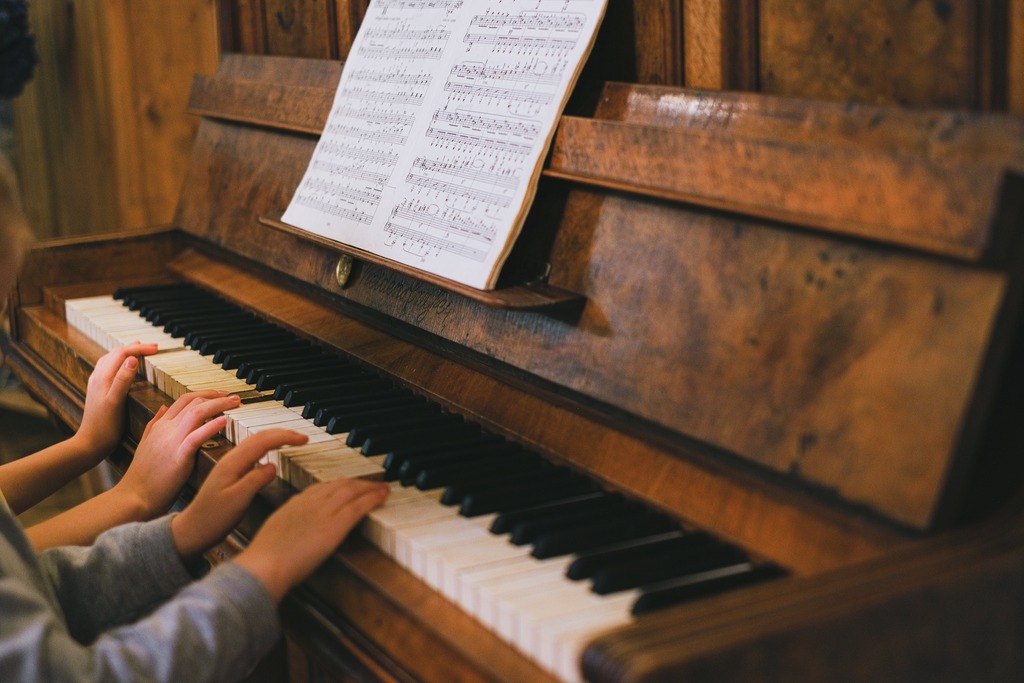In the world of music, different textures create unique auditory experiences. One such texture, polyphonic texture, stands out for its complexity and beauty.
Polyphonic texture is characterized by the simultaneous combination of several independent melody lines. In polyphonic music, each melody line is autonomous yet interwoven with others, creating a harmonious ensemble.
- Fall in love with the music - Learn your favorite songs, at a level suitable for you.
- Enjoy interactive piano lessons - Explore courses covering music theory, technique chords & more.
- Get real-time feedback - Skoove's feedback tells you what went well and what needs practice.

The characteristics of polyphonic texture music
The key characteristics of polyphonic music include:
- Independence: Each melody line in a polyphonic piece is independent, offering its unique contribution to the overall composition.
- Counterpoint: This technique involves the careful crafting of independent melodies that harmonize when played together. It’s a skillful balancing act that adds depth and complexity to the music.
- Complexity: Polyphonic music tends to be more complex than other textures, demanding a high level of skill from the composer and performers.
The history of polyphonic texture music
The evolution of polyphonic music is a fascinating journey through history, showcasing the growth and refinement of this musical texture over centuries.
Origins and evolution of polyphonic style
Polyphonic music’s roots can be traced back to the late Middle Ages, emerging as a distinct form in the 12th and 13th centuries. Initially, it was seen in the form of organum, a medieval music style where a plainchant melody was supplemented with another melody line. Over time, polyphony evolved, becoming more sophisticated and complex.
The Renaissance period marked a significant evolution in polyphonic music. Composers began to experiment more freely with melody, leading to richer and more intricate compositions. This period saw the birth of some of the most enduring polyphonic works.
Influential eras and composers in polyphonic music
Several eras played pivotal roles in the development of polyphonic music:
- The Renaissance era: This era witnessed a flourishing of polyphonic music. Composers like Josquin des Prez and Palestrina were masters of the style, creating works that are still revered today.
- The Baroque period: Polyphony continued to thrive in the Baroque era. Johann Sebastian Bach, a composer synonymous with polyphonic music, produced some of the most intricate and admired polyphonic compositions during this time.
These periods were instrumental in shaping the polyphonic style, each adding new layers of complexity and sophistication to the music. The composers of these eras pushed the boundaries of polyphony, creating works that challenged the performers and delighted the audiences.
Understanding polyphony texture in depth
To fully appreciate polyphonic texture, it’s essential to compare it with other musical textures and concepts. This comparison highlights the unique qualities of polyphony.
Polyphony vs. homophony
Polyphony and homophony are two distinct musical textures, each with its own characteristics:
- Polyphony: As discussed, involves multiple independent melody lines, each with equal importance. The complexity arises from how these melodies interact and complement each other.
- Homophony: In contrast, focuses on a single, dominant melody line supported by accompanying chords or harmonic background. The accompaniment in homophonic texture serves to enhance the main melody rather than compete with it.
While polyphonic music is characterized by its intricate interplay of melodies, homophonic music provides a clearer, more straightforward listening experience where the focus is primarily on one melody.
Polyphony vs. harmony
Another important distinction is between polyphony and harmony:
- Polyphony: Refers to the simultaneous combination of multiple melody lines, each moving independently.
- Harmony: Involves the vertical aspect of music, referring to how notes sound together at a particular moment, regardless of whether they form part of a melody or an accompaniment.
In essence, harmony can be seen as a component of polyphonic music, contributing to the overall texture, but it is not synonymous with polyphony. Polyphony is about the weaving together of multiple melodies, whereas harmony concerns the chords and intervals that result from this combination.
Polyphony texture in practice
Exploring how polyphonic texture is utilized in music, both historically and in contemporary times, offers valuable insights into its versatility and enduring appeal.
Iconic examples of polyphonic music
Over the centuries, numerous works have exemplified the beauty and complexity of polyphonic texture. Here are a few iconic examples:
- J.S. Bach’s Fugues: Bach’s fugues are quintessential polyphonic texture examples in music. In these compositions, multiple voices engage in a meticulous and harmonious dialogue, showcasing the essence of what is polyphonic texture in music.
- Renaissance Madrigals: These secular vocal music compositions are remarkable for their use of polyphonic texture, weaving together various vocal lines to create a rich, emotive tapestry of sound.
- Beethoven’s Symphony No. 9: The final movement of this symphony demonstrates how polyphonic texture can be employed in large-scale compositions, blending multiple melodies to create a powerful and moving piece.
Polyphony in contemporary music
Polyphonic texture isn’t just a feature of classical music; it’s also prevalent in contemporary music across various genres. Modern polyphonic texture examples in music can be found in:
- Jazz: Many jazz pieces use polyphonic texture, where instruments like the piano, saxophone, and trumpet interweave their melodies, creating a dynamic and complex sound.
- Pop music: Some pop songs incorporate polyphonic elements, especially in vocal arrangements where background singers provide counter-melodies to the lead vocalist.
These contemporary uses of polyphonic texture showcase its adaptability and relevance in today’s music scene.
The lasting impact of polyphonic texture in music
The enduring appeal of polyphonic music lies in its ability to convey complex emotions and ideas, engaging listeners in a multi-layered auditory experience. This texture is not just a technical term in music theory; it represents an artistic approach that challenges composers and delights audiences.
As we’ve seen through iconic examples and the evolution of this style, polyphonic texture offers a unique listening experience. Its impact extends beyond the realms of classical music, influencing modern genres and continuing to inspire musicians and composers around the world.
Author of this blog post:
Susana Pérez Posada

With over seven years in piano education and a deep passion for music therapy, Susana brings a unique blend of expertise to Skoove. A graduate in Music Therapy from SRH Hochschule Heidelberg and an experienced classical pianist from Universidad EAFIT, she infuses her teaching with a holistic approach that transcends traditional piano lessons. In her writings for Skoove, Susana combines her rich musical knowledge with engaging storytelling, enriching the learning experience for pianists of all levels. Away from the piano, she loves exploring new places and immersing herself in a good book, believing these diverse experiences enhance her creative teaching style.
Edited and fact checked by Eddie Bond, multi-instrumentalist performer, composer, and music instructor
Published by Lidya Ogan from the Skoove team














